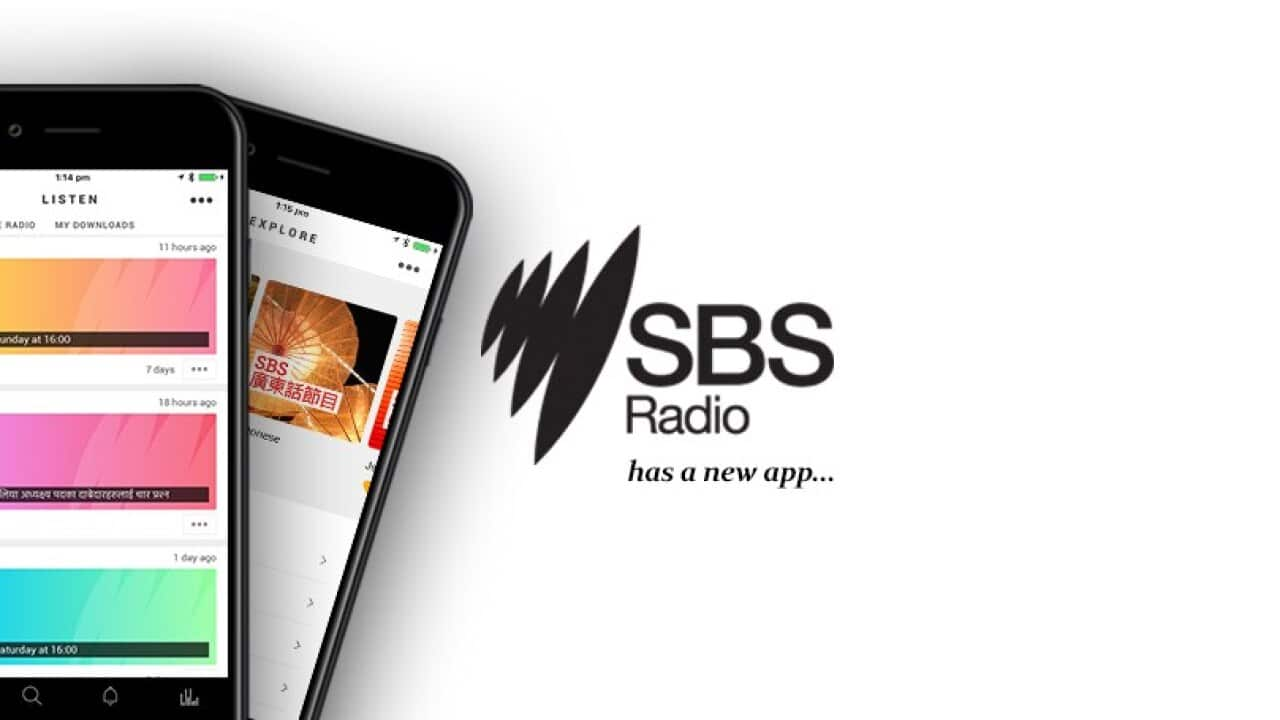Highlights
- Large quantities of donated clothes end up in landfill or shops for sale
- Used Australian clothes are in high demand in Europe and the UK
- A misleading collection bin can be reported to the ACCC
The National Association of Charitable Recycling Organisations states that Australians donate more than 780,000 tonnes of clothing and goods to charity stores every year but some donors suspect that not all clothes are reaching those in need.
Used Australian have been found on sale in shops in Europe.
The surge of used Australian garments overseas
SBS Urdu's UK correspondent Shafi Naqi Jamie says that used Australian clothes are in high demand in Europe and the UK.
"I have witnessed high demand for Australian used garments in London where street markets and charity stores are overwhelmed with their numbers during the winter", Shafi added.
Buyers and tourists can purchase quality Australian used garments from the best fashion hotspots in London for a fraction of designer prices.
Shafi visited Shepherd's Bush, London's famous market old and new clothes, where he saw woolen overcoats marked 'Made in Australia' .
"Shopkeepers agreed that Australian-made used women dresses fetch good money. Such clothes are fairly popular in Eastern Europe", he added.
Donations for the needy or greedy?
The 2017 data from the Australian Bureau of Statistics reveals that more than 62 million kilograms of Australian donated clothes are exported overseas. Is it illegal?
In response to the question, Dr Johns says that selling donated used garments by charities to commercial proprietors is not illegal unless the money obtained from this sale is used inappropriately or a profit is made from that sale.
"Charity organisations are struggling to handle the unwanted used clothes left at their doorstep", the ACNC chief added.
The Australian Charities and Not-for-Profits Commission () is the national regulator of charities that registers over 58,000 charities across the country.
ACNC commissioner Dr Gary Johns told SBS Urdu that he wishes to remind donors and charities to help run the system according to regulations.
He outlines the donor's rights and responsibilities as follows:
- Check the label on a collection bin to ensure it is for charity
- Check with a charity to ensure they accept and need the kind of garments people want to donate
- Giving charities goods they do not want, creates waste and uses up a charity’s limited resources for disposal
- If an item doesn’t fit into a charity bin, do not leave it outside
Waste of resources
Charities are spending large sums of money to send unusable donated garments to landfill.
Mattresses, carpet padding and rags are some items that can be recycled. However, large-scale processing of used textiles to create fibre is still not being done.
Australian Circular Textile Association () was formed to initiate collaboration among charity, fashion and repurposing sectors but a research report from says that the equivalent of one garbage truck full of textiles reaches landfill or is burned every second.
Misleading labelling
By law, donation bins must be labelled as to whether they are for a charity or a commercial entity. Laws vary amongst states and territories but the overarching law is specified by the Australian Competition and Consumer Commission (ACCC). It states that an entity should not mislead the public with deceptive conduct. For example, by misrepresenting its purpose to solicit a donation.
Some non-charitable commercial enterprises operate a recycling function and occasionally, people can not distinguish between commercial and charity bins. Before making a donation of any kind to an entity claiming to be a charity, the ACNC encourages people to check the to ensure it is registered. Dr Johns encourages people to report misleading labeling to ACCC, which runs , a public service to bring attention to scams and other fraudulent behaviour.
Dr Johns encourages people to report misleading labeling to ACCC, which runs , a public service to bring attention to scams and other fraudulent behaviour.

Source: Getty
There is no evidence that any commercial entity is directly collecting used clothes in the name of charity. However, there are no restrictions on charity organisations to sell used garments to commercial entities for cash.
The ACNC can investigate concerns that a charity has breached the ACNC Act or its governance standards.
We take all concerns seriously and will investigate a registered charity if there is evidence that the charity has failed to comply with its obligations

Source: Getty
Dr Johns promised to consider the idea of providing in-language information on the ACNC online pages. He also encouraged charity organisations to consider labelling information in different languages for the ease of culturally and linguistically diverse (CALD) communities.
He says that ACNC has a range of powers that it can exercise in cases where a charity has failed to comply with its obligations.
"From warnings and directions to financial penalties and revocation of a charity’s registration", he counted the list of punitive actions that can be taken against offenders.
The uses of these regulatory powers are published on the ACNC website.
SBS Urdu tried to contact many commercial operators but did not receive any response till the publication of this article.
If someone has concerns that a registered charity is not complying with its obligations, they can raise their concern swith ACNC .
More information can be found on the ACNC website and people can raise a concern about a charity here:
Click on the audio icon in the picture above to listen to the podcast in Urdu.
- Please bookmark 's website and search your app store for the SBS Radio app.
- SBS Urdu is broadcast every Wednesday and Sunday at 6 PM (AEST)







